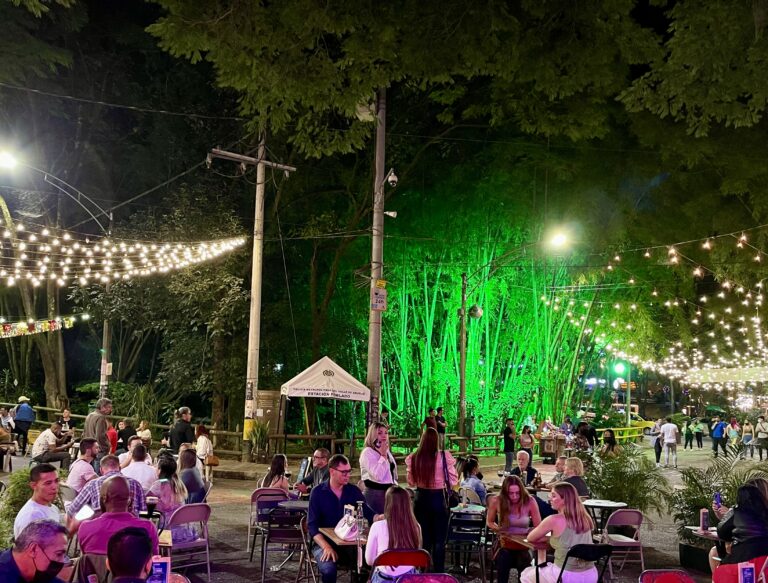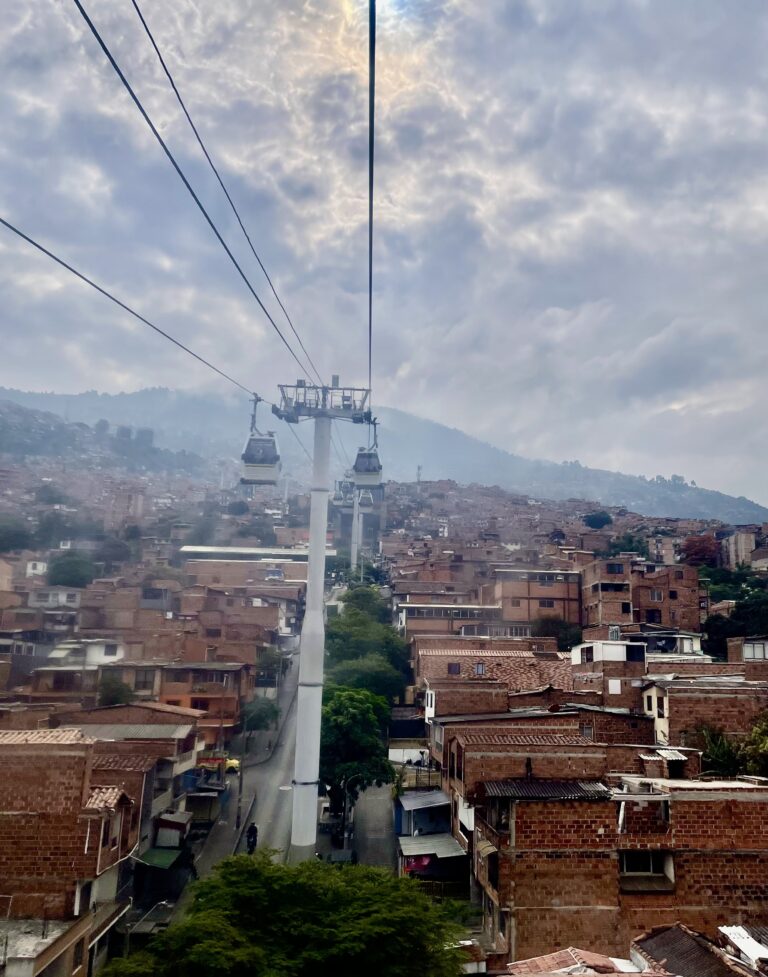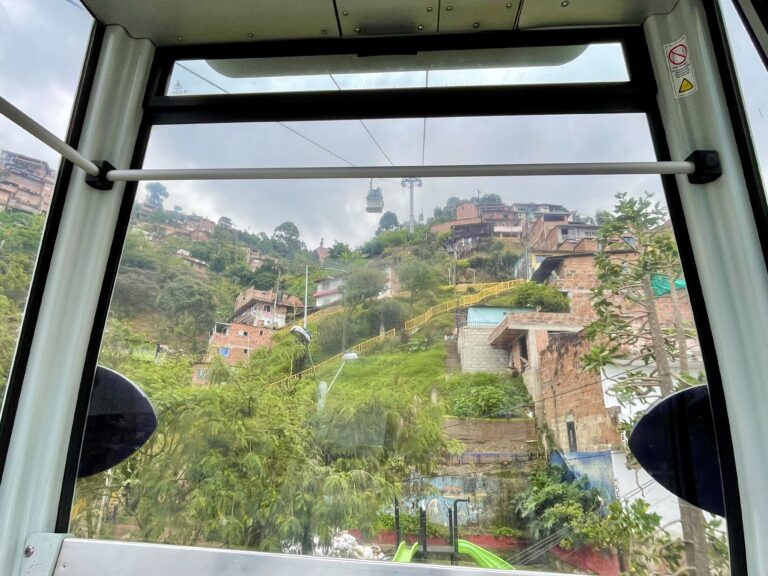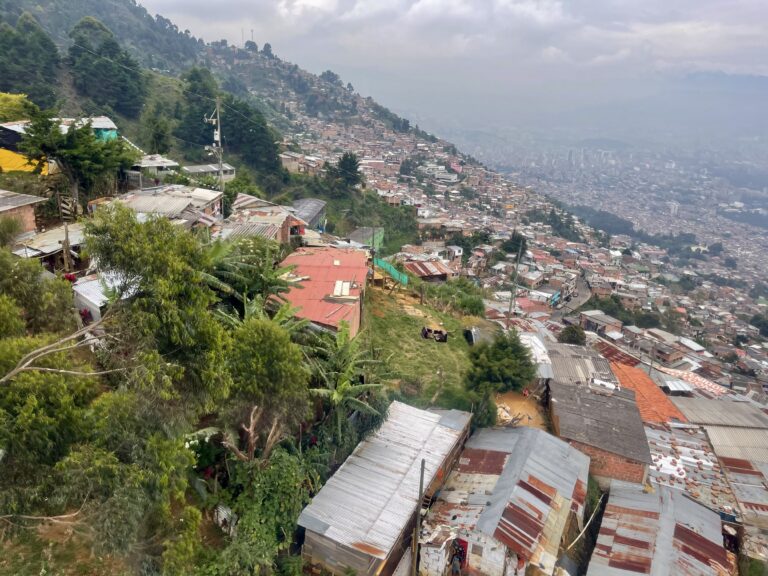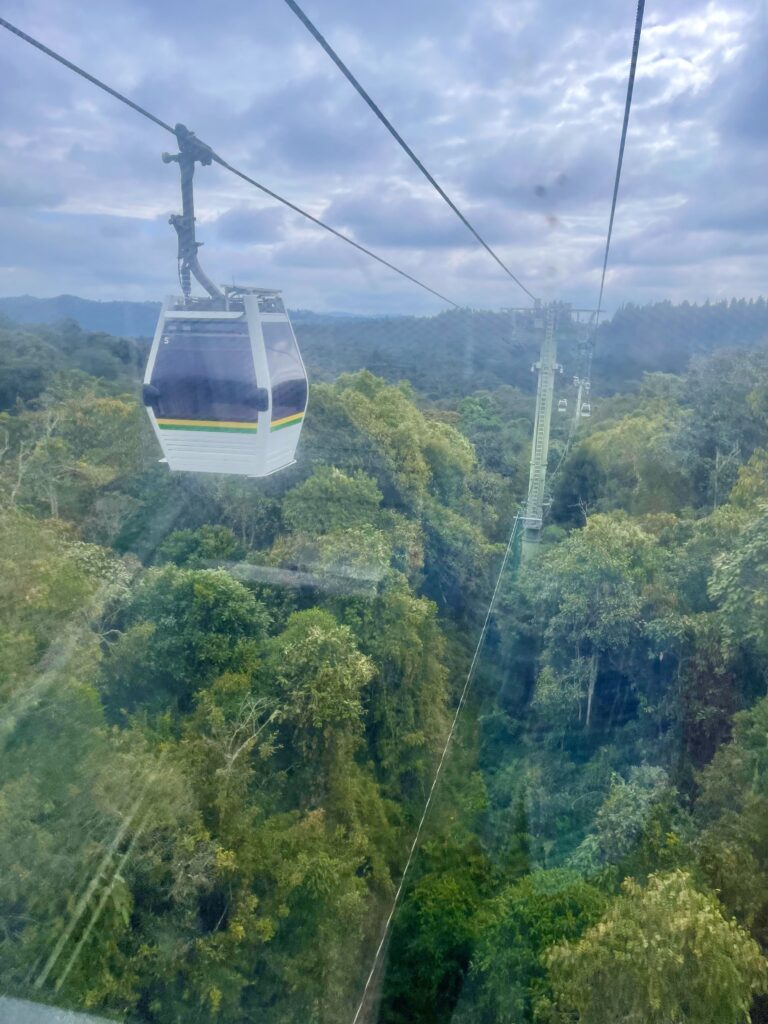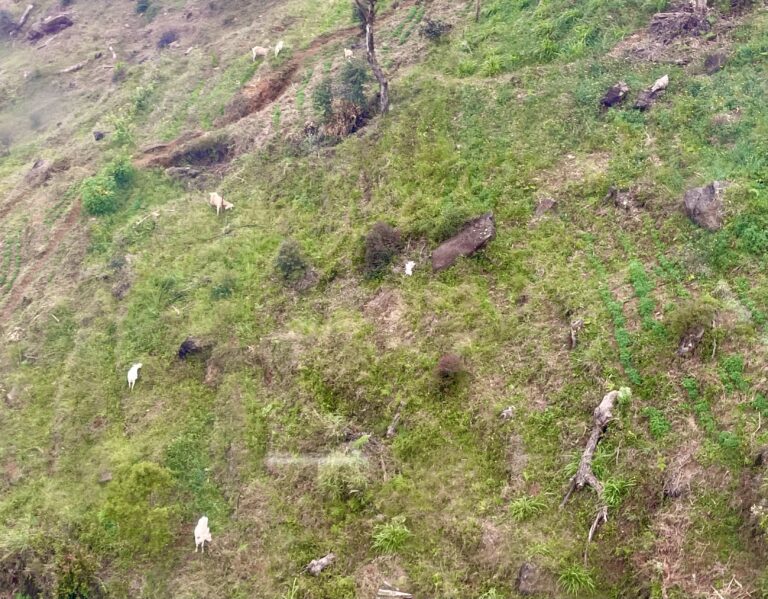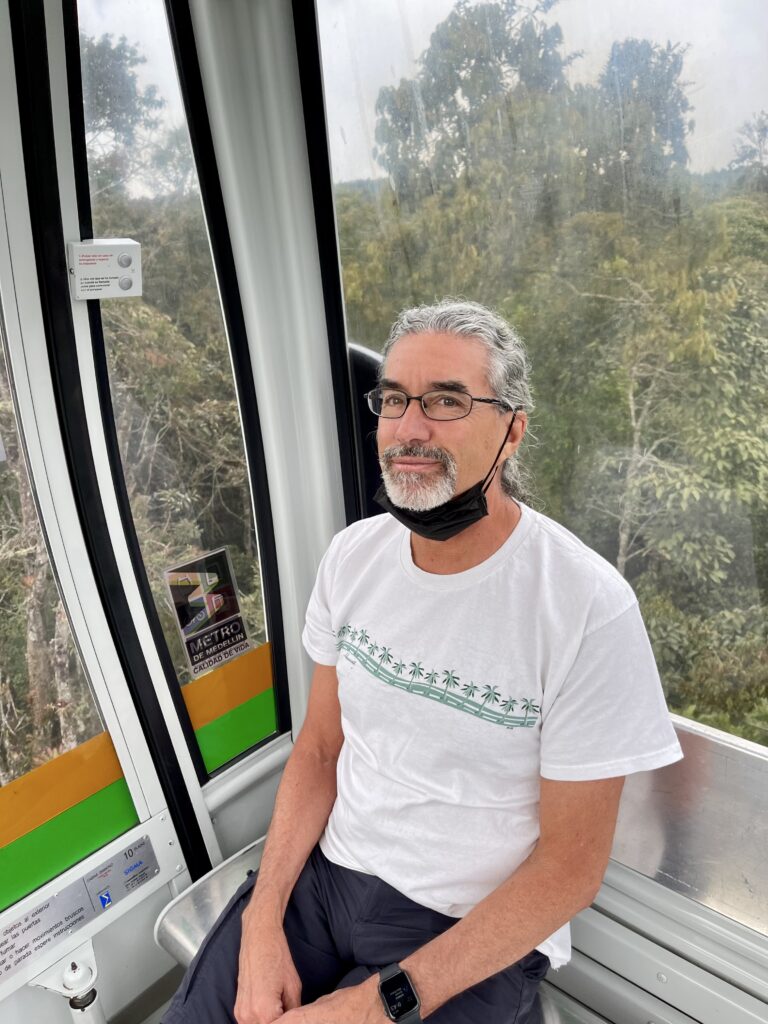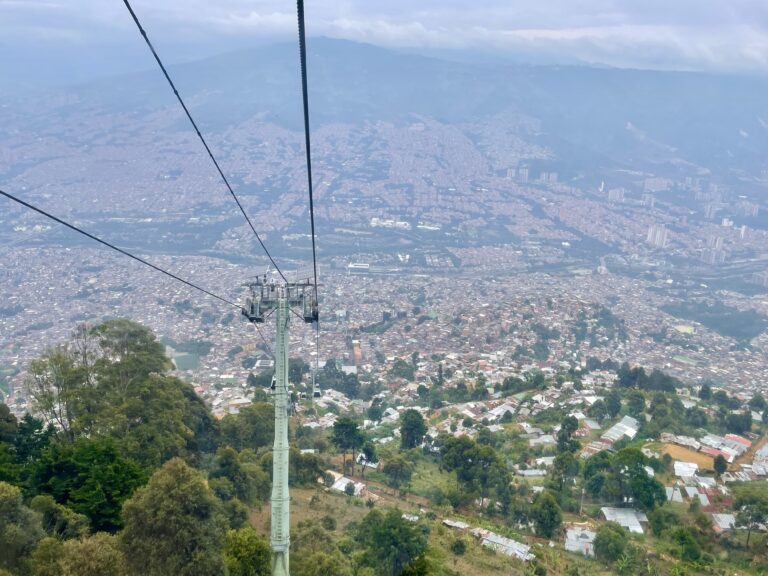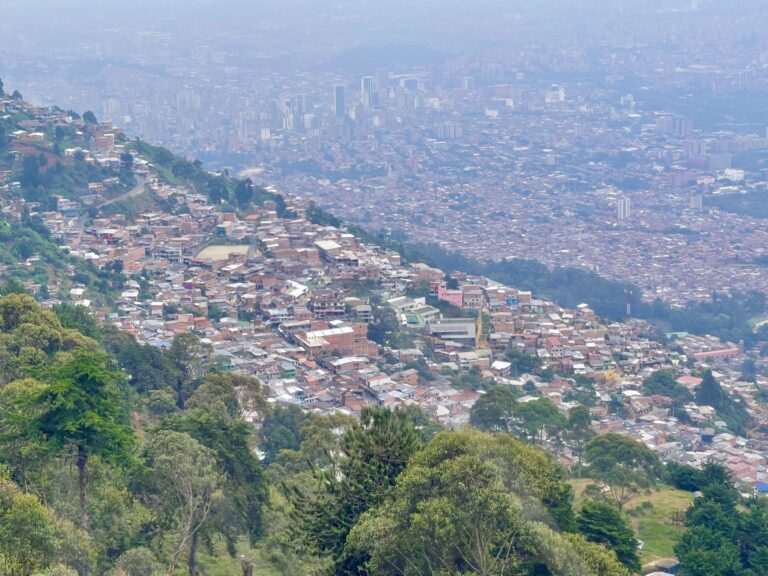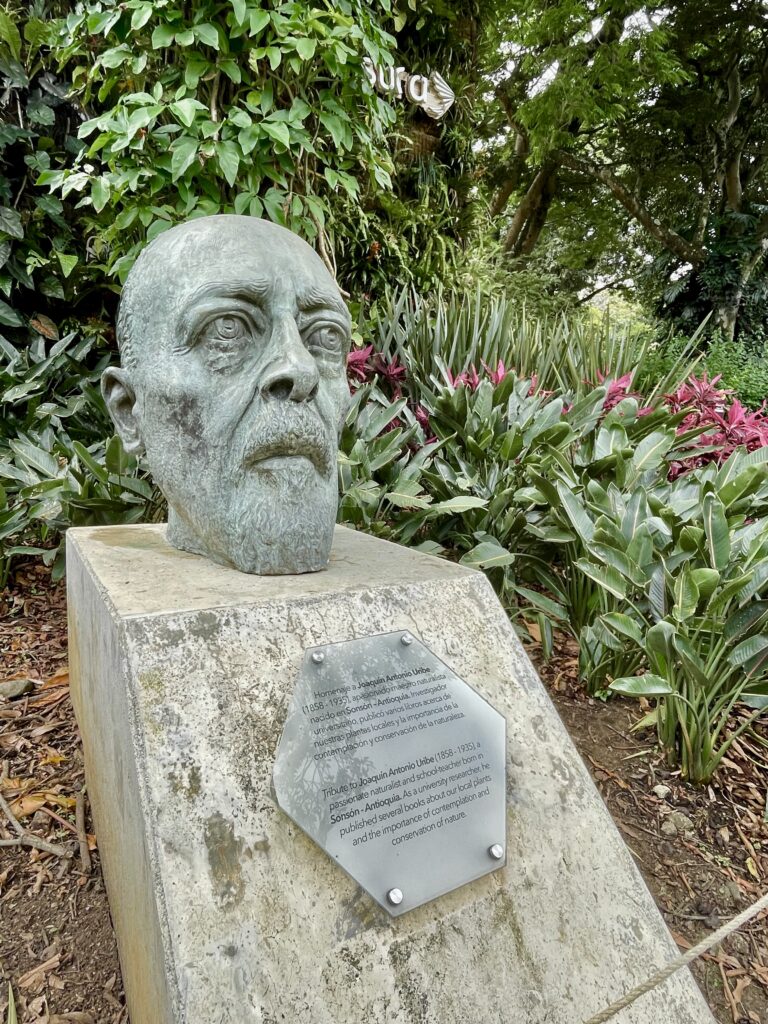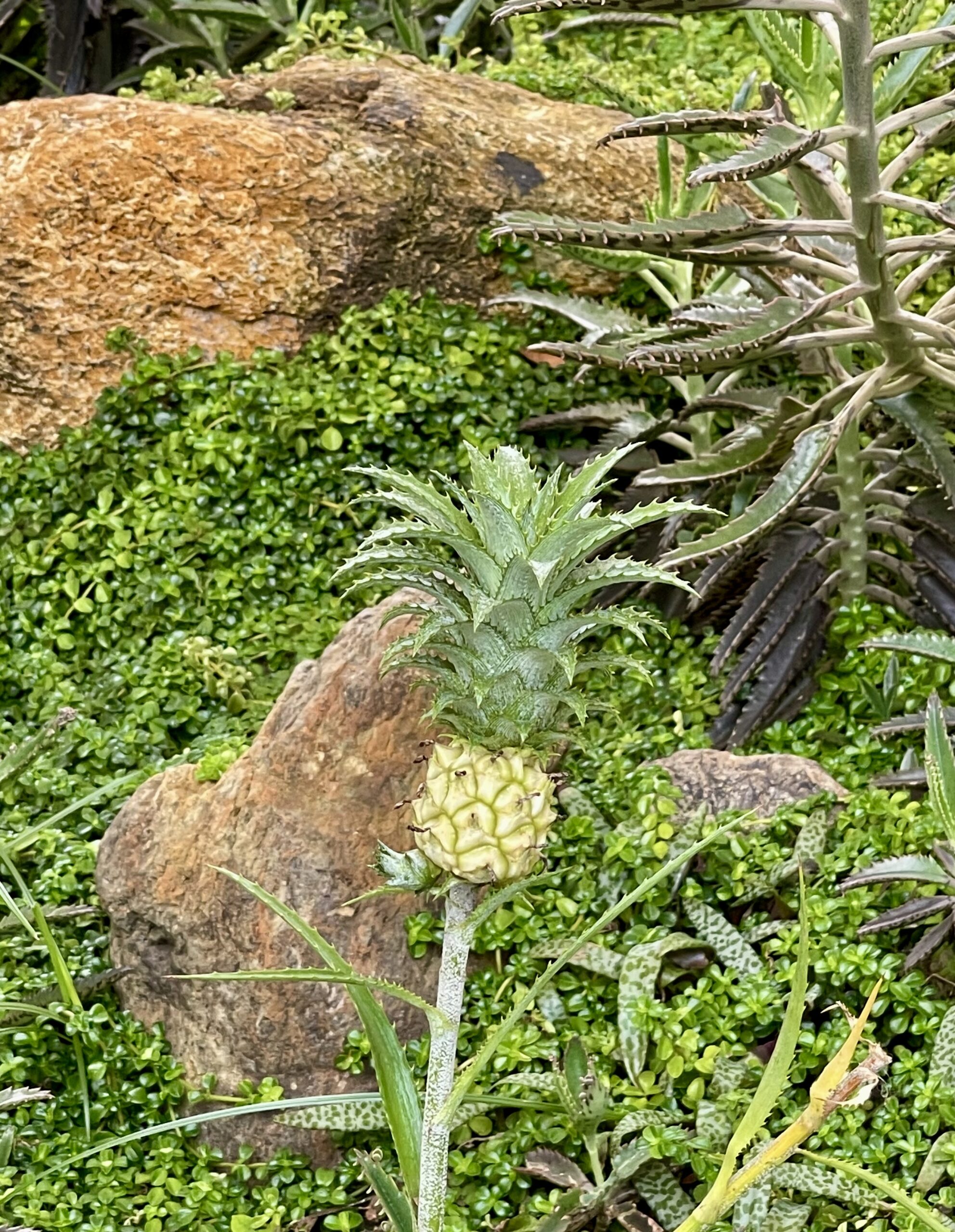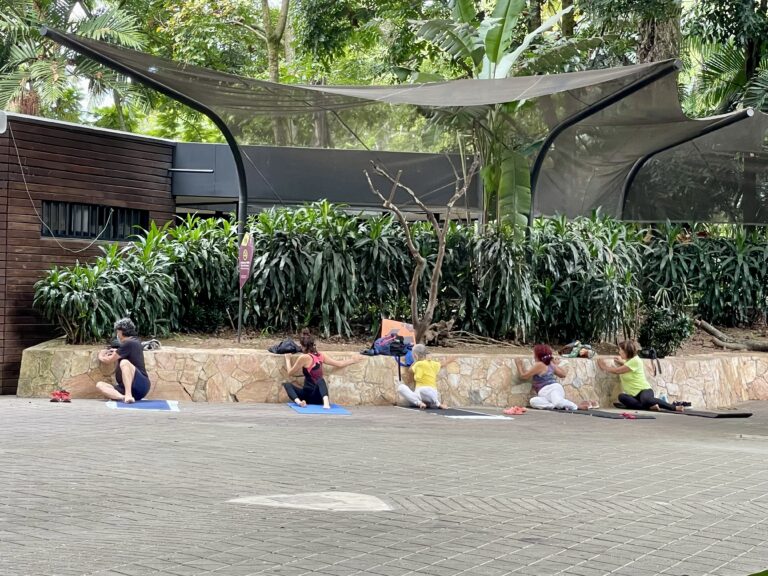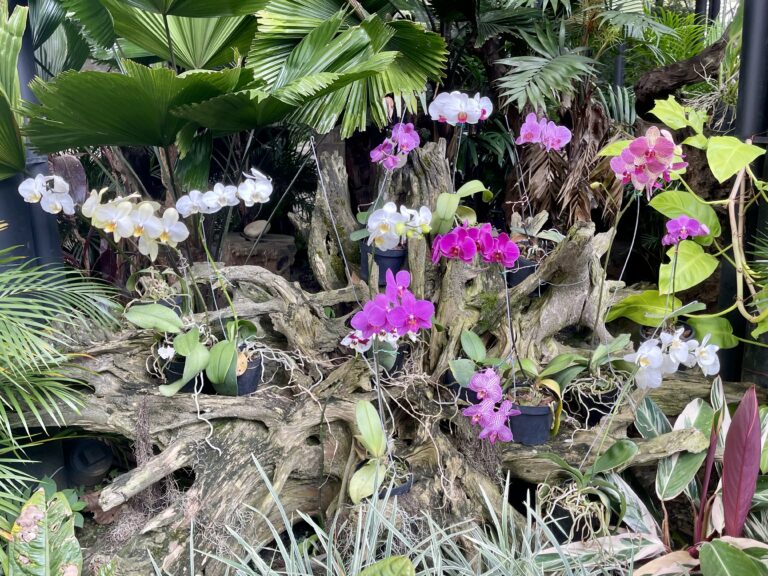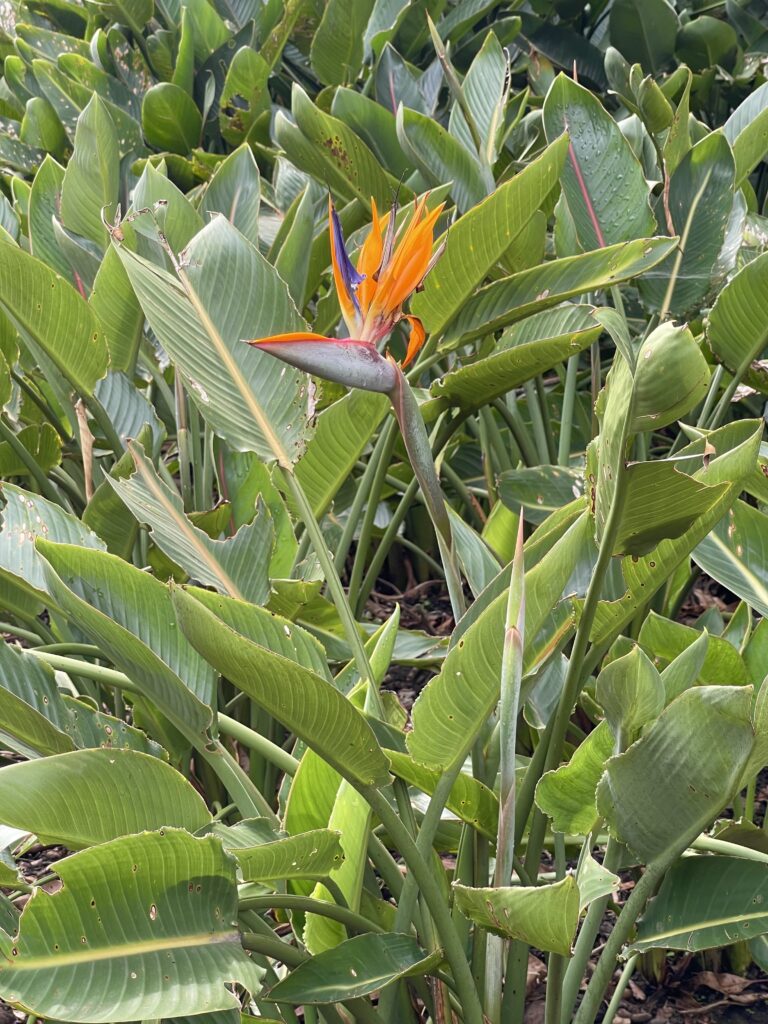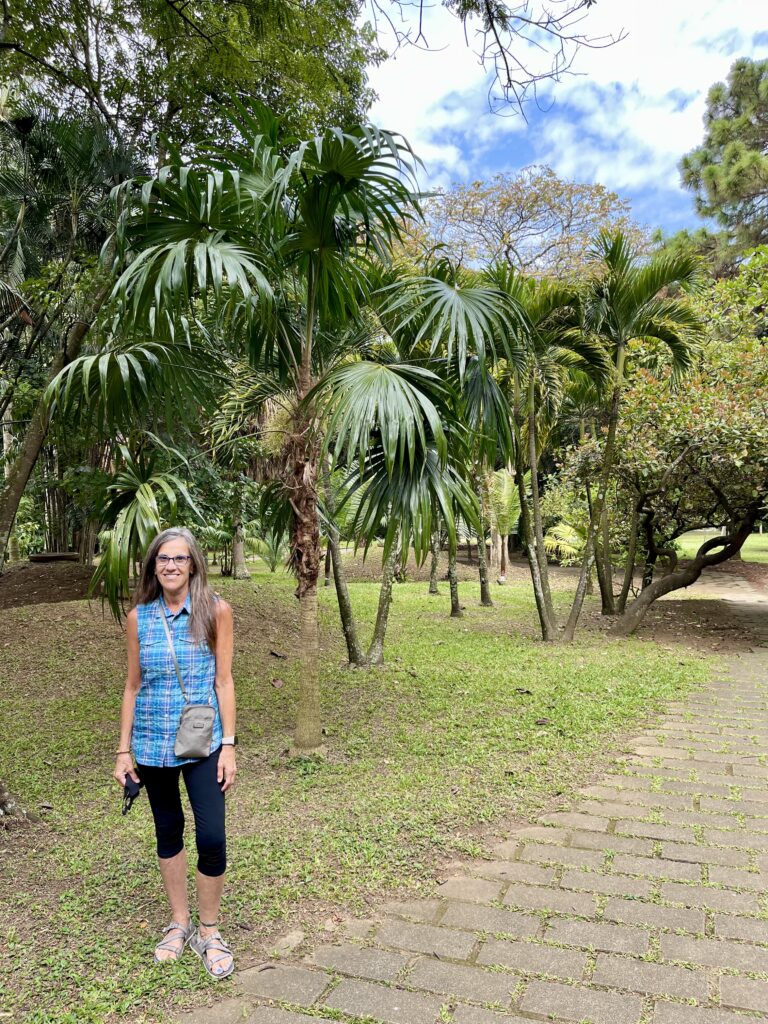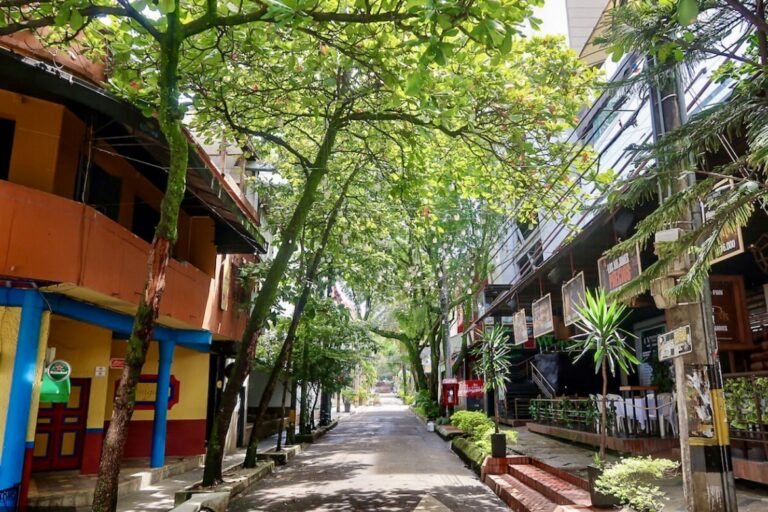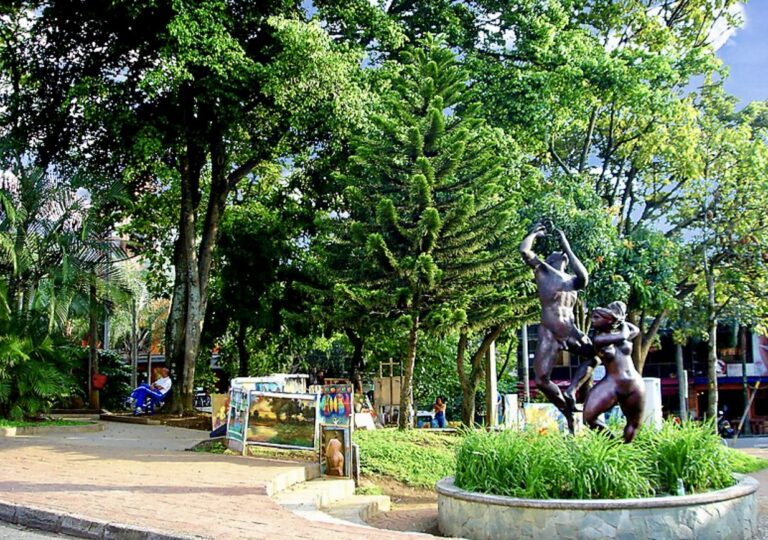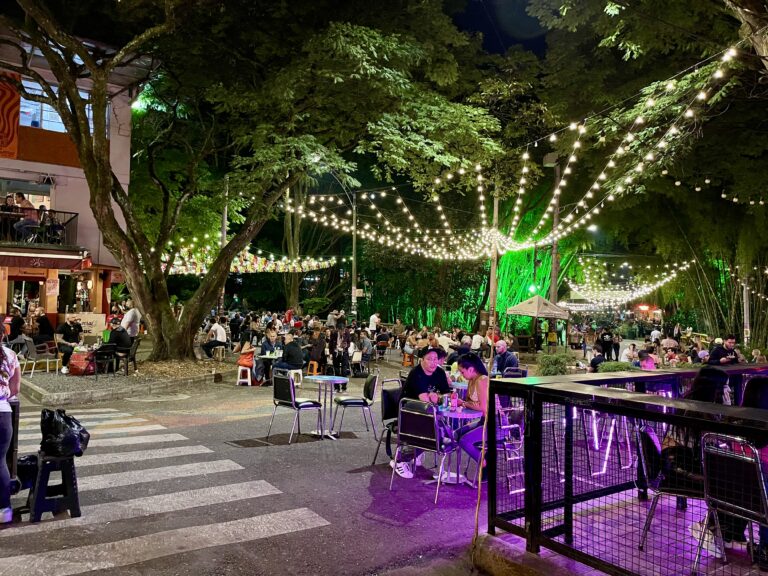January 22, 2022
We woke early, hoping to beat the rain forecasted for later in the day and took a US$1.50 Uber 15 minutes away to the metro stop. We took a long metro ride uptown, then eventually transferred to Metrocable—the Medellín cable car system.
Metrocable is an innovative, modern and clean six-route gondola commuter system that provides access to the once-isolated Medellín communities that sprawl up the sides of the Andean foothills. The gondola lifted us above the same kind of haphazard buildings we had seen at Comuna 13, where most of the thousands of residents had no roads but only steep paths to get anywhere.
Perhaps because it was still only around 9:30 am and cloudy, we were one of very few riders and had an entire gondola to ourselves. We were amazed that such a well-engineered cable system could go that far and high and still charge less than US$3.
We stayed on the gondola when we reached the park at the end and looped back down (otherwise we’d have to pay another fare and there was little to do at the park without hiring a “guide”), still impressed that we’d been taken 3,000 feet up into the steep hills surrounding Medellín along a several mile long gondola ride that we guessed would have cost anywhere from $25-$40 in the U.S.
Afterwards we took a metro to Medellín’s free Joaquín Antonio Uribe Jardín Botánico (Botanical Gardens). It provided a nice respite from the surrounding urban scene.
We wandered about for a while, enjoying the pretty paths that meandered through groves of palms, flowers, and other tropical plants.
From there, we took the metro back to Medellín’s popular El Poblado neighborhood. Though our hotel bordered El Poblado our only foray into the area had been when we took care of our laundry a few days before. Today, we spent hours walking up and down the hilly roads, checking out the cafes, shops and leafy streets. The area was filled with a mix of locals, expats, backpacking-hostel-staying travelers, and a sprinkling of older, well-heeled tourists. Eventually, we returned to our hotel to rest for a while with a plan to come back in a few hours to experience El Poblado when it really comes alive after dark.
And we did. An Uber brought us back to El Poblado after sunset. It was a very different scene at night, with people filling the sidewalks and gathering on a few closed-to-traffic streets. Dozens of bars and clubs competed for whose music would be louder, while colorful strings of lights dangled over customers seated at the hundreds of outdoor tables.
We walked up and down the hilly streets taking in the scene. Eventually, we stopped at an outside table and enjoyed overpriced beers as we watched throngs of people enjoying themselves in the perfect 75°F evening temperature. The locals were typically dressed neatly without being fancy. Men sported short hair and wore long pants and either t-shirts or button-downs, and women wore their hair long and were dressed in jeans and nice tops or sometimes very short dresses. One thing that struck us was that no matter what else they wore nearly every person wore clean bright white sneakers. We definitely stood out—me with a ponytail and shorts, and Susan with a hiking dress and sandals.
After finishing our beers, we picked up street food and wandered more through the lively streets, never feeling unsafe. It was Saturday night and as it got later the streets and bars filled to overflowing, canned music increasing in volume and people dancing in discotheques. Tired from miles of walking, we eventually took a US$1.30 Uber back to our hotel. For some reason, prices were even less despite the heavier traffic. Surge pricing apparently didn’t make it to Medellín.

